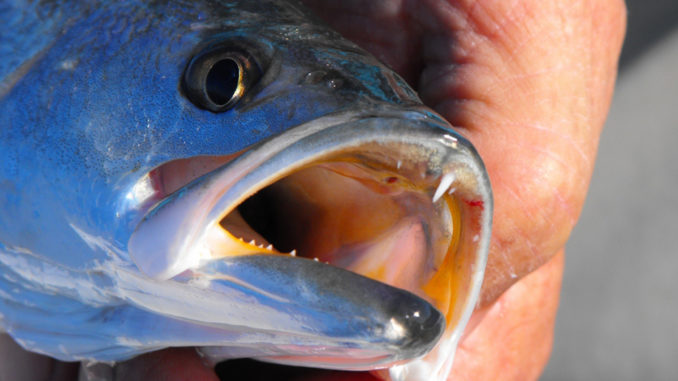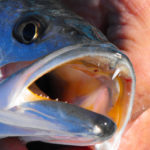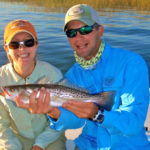
It may take five years for specks to rebound
Spotted seatrout — “specks” to many coastal anglers — are a favorite target for many light- tackle fisherman; fun to catch and good to eat.
In years past, catching a limit of trout was a relatively easy task, especially when using popping corks and live shrimp. More recently, finding and catching large numbers of trout with any consistency has proven difficult. Anglers who have been able to successfully target trout the past two years have enjoyed something of an elevated status among their peers.
Coming off one of the warmest winters in history has inshore anglers hopeful that this year will see catches similar to those had before winter kills starting in 2009, but if history is any indication we aren’t out of the woods just yet.
Spotted seatrout took a beating from the cold for two winters in a row. Trout are an estuarine-dependent species of fish; they do not move offshore to deeper waters during the colder months but instead stay inshore where they are more susceptible to temperature extremes. When the inshore water temperature drops into the lower 40s, many seatrout will simply not survive, a phenomenon often referred to as “cold-stun”.
The population last year was reduced to the point that the S.C. Department of Natural Resources asked anglers to voluntarily release any spotted seatrout they caught through the spring and summer. Those measures were a big help, but we are not out of the woods yet. Dr. Steve Arnott of the SCDNR Marine Resources Research Institute in Charleston said, “We are seeing seatrout in our surveys, but the numbers are still relatively low when we compare them across the last 20 years.”
After a winter kill, it takes more than a single season for the population to rebound to normal levels. After a cold-stun event in the winter of 2000-2001, the population did not reach healthy levels again until around five years later; that was only one winter kill, not two in a row like we just experienced.
Many anglers are eager to put some specks in the cooler, but until populations increase, practicing catch-and-release can have a huge impact on their rate of recovery.
“Conservation is always a good practice, and we always encourage catch-and-release,” said Wallace Jenkins, an SCDNR biologist. “Anything that anglers can do, especially during the late spring/early summer spawning season, will likely speed recovery to levels of abundance.”
With catch and release so important, many fishermen ask why SCDNR doesn’t tighten bag limits or close the fishery all together instead of asking anglers to voluntarily take these measures. The reason: SCDNR does not have the authority to bring in new regulations themselves; it has to go through the state legislature.
“We are exploring opportunities to clarify language in (state) law to give us more latitude in the future,” Jenkins said.
It is unclear whether SCDNR will ask for a voluntary closure again this year, because all of the numbers are not in yet.
“Because of a variety of factors… there is a lag of several months after winter before we will have a clearer picture of recruitment and relative abundance.”
If needed, biologists believe that a voluntary closure is an effective way of helping trout recover.
“We had very positive feedback from anglers about the closure last year,” Arnott said.
Although all of the numbers are not in yet, it is a safe bet that trout did benefit some from the mild 2011/2012 winter.
“When we look at our ‘fishery-independent’ studies surveys, we tend to see an increase in seatrout numbers after a series of warm winters. From this, we would expect this winter to have been beneficial,” Arnott said.
Only time will tell how fast the trout will recover, but thankfully, the SCDNR is constantly collecting data that is used to help and advise on what needs to be done. There is no way to control Mother Nature, but anglers can still make a big impact on trout populations simply by letting them live. Safe-handling practices, using fish-friendly tackle like circle hooks, and getting them back in the water as soon as possible, are all proven ways to hasten the recovery process and start enjoying catching limits of specks and the resulting fish fries even quicker than in years past.





Be the first to comment